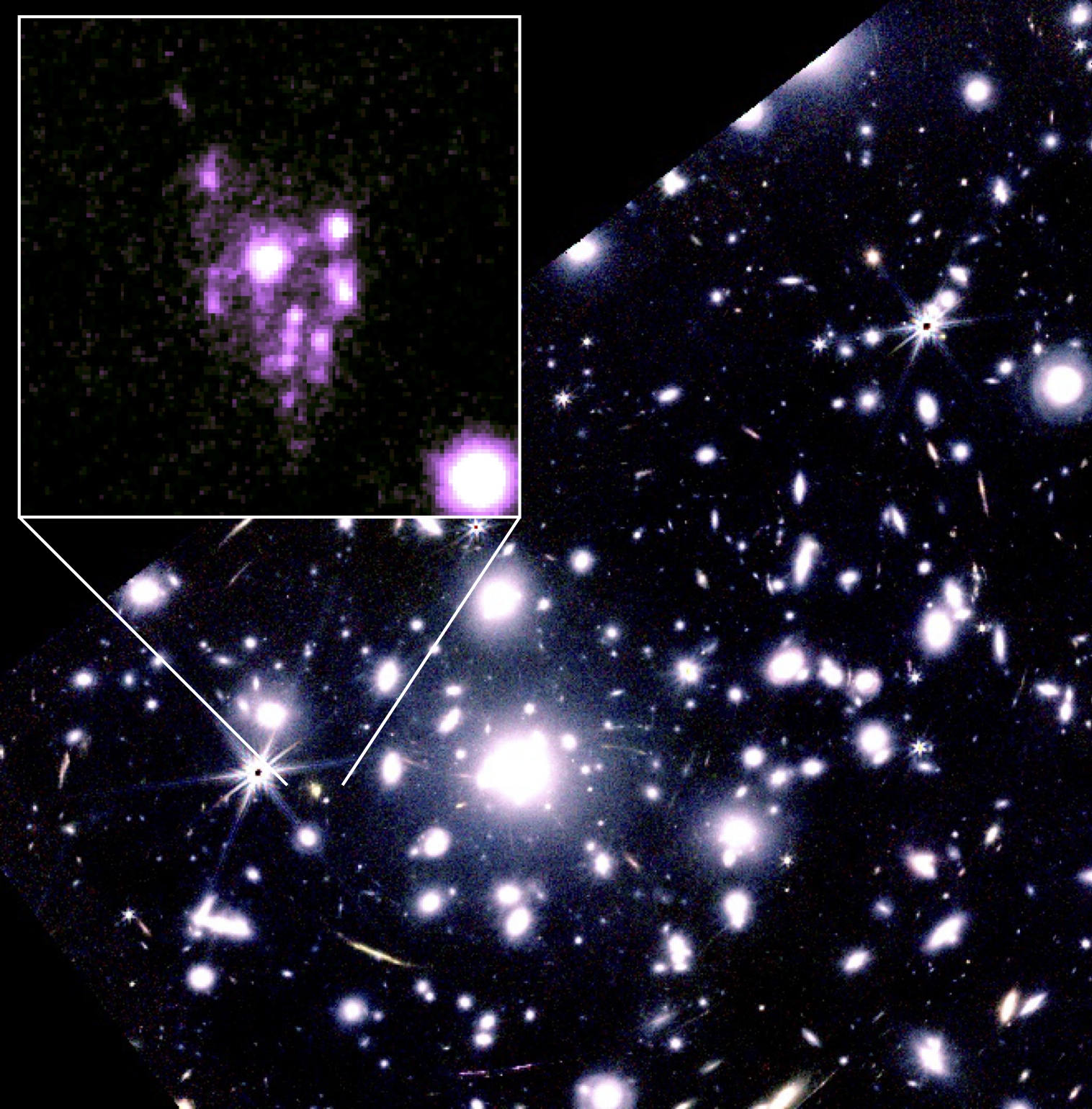Thanks to the natural magnification from gravitational lensing, researchers have been able to study a small galaxy from when the universe was not even 1 billion years old. They saw that it is made of many clumps. This has earned the object the nickname “Cosmic Grapes” and has also challenged some of our expectations around how galaxies grow.
The rest of this article is behind a paywall. Please sign in or subscribe to access the full content.
The object was observed by both JWST and the Atacama Large Millimeter Array (ALMA). It lies directly behind a large galaxy cluster with thousands of galaxies, which is much closer to us. The gravity of this cluster warps spacetime in such a way that the light of the distant galaxy is magnified and duplicated. Actually, there are five mirror images, making it quintuplicated.
This is known as gravitational lensing. The Cosmic Grapes were made 100 times brighter and larger than they would otherwise appear. Combined with the power of telescopes such as JWST and ALMA, astronomers got a detailed view of a very distant galaxy.

It really looks like grapes! Near-infrared images taken by JWST of the galaxy cluster “RXCJ0600-2007,” with the lensed galaxy in the inset.
Image credit: NASA/ESA/CSA/Fujimoto et al.
“Thanks to the extraordinary resolution of JWST and ALMA and the natural magnification from gravitational lensing,” Seiji Fujimoto, who was the primary investigator on the project, leading the observations and data analysis of the galaxy, said in a statement, “we were able to zoom into a typical early galaxy with unprecedented clarity – revealing its inner structure in a way that has never been possible.”
In those images, the researchers were able to distinguish detailed structures inside the galaxy. They found 15 clumps with a size between 30 and 200 light-years, which are actively forming stars. The galaxy in itself is nothing peculiar in terms of its general properties, which suggests the high number of clumps discovered should also be expected as a common property in galaxies in the early universe. And that is a problem!
Simulations of galaxy formation and evolution do not produce rotating galaxies at that time (930 million years after the Big Bang) with a large number of clumps. This indicates that the standard view of how galaxies are born and grow might be missing some important factor.
“It was truly astonishing to witness such a numerous star-forming clumps within a galaxy that is also smoothly rotating,” added Fujimoto. “This is something we’ve never seen before in the early universe, and it challenges our current understanding of how galaxies form and evolve.”
It is likely that there is a whole population of galaxies with more complex internal structures beyond the limit of what telescopes can observe (without the assistance of gravitational lensing) – and beyond our theories.
The study is published in the journal Nature Astronomy.
Source Link: A New View Of The "Cosmic Grapes" Is Challenging Our Theories Of How Galaxies Form